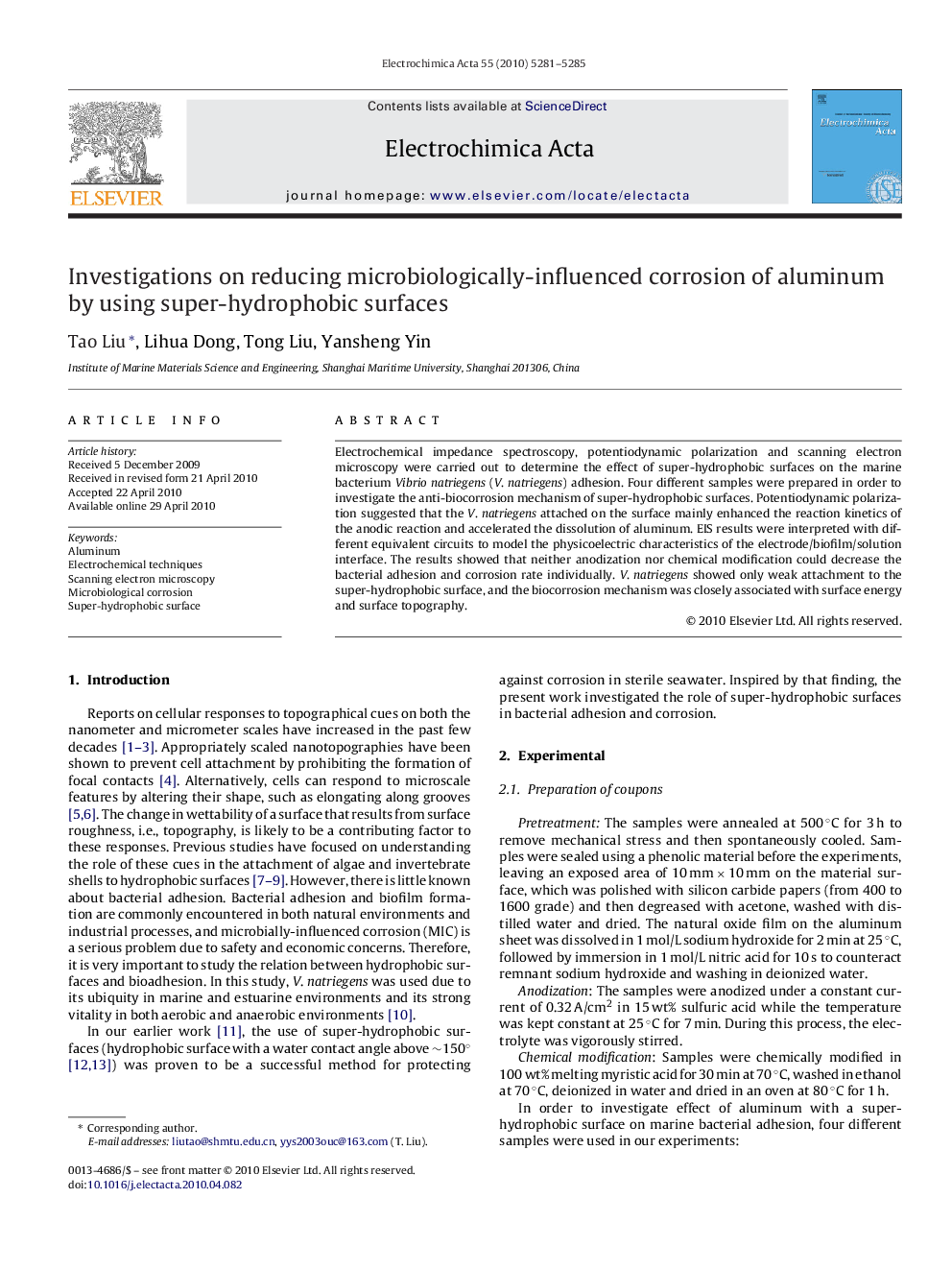| Article ID | Journal | Published Year | Pages | File Type |
|---|---|---|---|---|
| 192437 | Electrochimica Acta | 2010 | 5 Pages |
Electrochemical impedance spectroscopy, potentiodynamic polarization and scanning electron microscopy were carried out to determine the effect of super-hydrophobic surfaces on the marine bacterium Vibrio natriegens (V. natriegens) adhesion. Four different samples were prepared in order to investigate the anti-biocorrosion mechanism of super-hydrophobic surfaces. Potentiodynamic polarization suggested that the V. natriegens attached on the surface mainly enhanced the reaction kinetics of the anodic reaction and accelerated the dissolution of aluminum. EIS results were interpreted with different equivalent circuits to model the physicoelectric characteristics of the electrode/biofilm/solution interface. The results showed that neither anodization nor chemical modification could decrease the bacterial adhesion and corrosion rate individually. V. natriegens showed only weak attachment to the super-hydrophobic surface, and the biocorrosion mechanism was closely associated with surface energy and surface topography.
